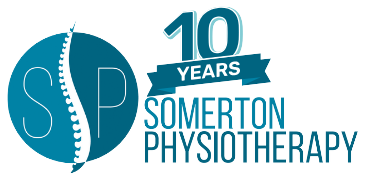Osteoporosis and Physiotherapy

What is osteoporosis and why is it important?
Osteoporosis (OP) is defined as low bone mineral density caused by altered bone microstructure which can predispose sufferers to “low impact” fractures. Such fractures (such as hip fractures in the elderly) can have a significant impact on a person’s level of function and result in death in those with other illnesses.
Over 50% of postmenopausal white women will have an osteoporotic-fracture. Bone tissue is constantly being absorbed and replaced throughout the life. Peak bone mass is met at the average age of 20. Those who develop less bone mass by this time have a high chance of developing osteoporosis.
Types of Osteoporosis
There are two main types of OP as described below.
- Primary osteoporosis has no definite known cause but there are many contributing factors including prolonged negative calcium balance, impaired gonadal and adrenal function and oestrogen deficiency and sedentary lifestyle.
- Postmenopausal osteoporosis is caused by increased bone loss due to a decrease in oestrogen production.
- Senile osteoporosis is bone loss related to advanced age.
2. Secondary osteoporosis is due to another condition or prolonged medication use which reduces bone density.
Prevention
Lifelong calcium intake has been recommended to build up bone density prior to peak bone density at around age 20 and after to maintain these levels of bone density. Furthermore, bone is produced when load is applied to it as in the form of exercise – people who are more active typical have higher levels of bone density than sedentary people.
How is it diagnosed?
DEXA scan is recognised as the gold standard in diagnosing OP. Results are reported using “T-scores”. T-scores are relative to how much higher or lower your bone density is compared to a healthy 30-year-old adult. Laboratory function of renal and thyroid function should also be carried out in the diagnosis.
Signs and symptoms of OP include:
- Back pain
- Kyphosis or increased spinal curvature
- Decreased activity tolerance
Treatment of OP
Medications can reduce the risk of fracture in OP sufferers in both the spine and hips. Medications used include Bisphosphonates, Denosumab and Hormone Replacement Therapy (HRT).
Given that low levels of physical activity are associated with developing OP, physiotherapy has a major role in its prevention and treatment. Prescription of weight-bearing exercise is crucial to strengthen bones and exercise to improve balance and muscle strength can reduce the chance of falls in the elderly. Strengthening exercise using weights or resistance bands have been shown to improve bone density at the site of attachment of the targeted muscles. Advice can be given regarding safety at home, appropriate footwear and a healthy diet. Physiotherapists may also treat the elderly for back pain in the older population.
In Conclusion
Osteoporosis is a “silent disease” and early prevention is the key. 50% of women and 20% of men will have an OP related fracture in their life which can result in lasting disability. Seeing a physiotherapist for exercise prescription or participation in supervised exercise for those who have poor mobility is crucial.
In our clinics in Blanchardstown and Castleknock, I have worked with otherwise healthy clients who were concerned about their own risk of OP either due to age or a DEXA scan showing signs of reduced bone density (osteopenia). The treatment approach used involves exercise as described above in addition to making recommendations on the person’s diet and lifestyle. These clients have found great benefit from doing supervised exercise initially and have since moved on to doing independent exercise at home to continue to improve their bone density and reduce their risk of falls.
If you are looking for a Physiotherapist to help with Osteoporosis in Dublin 15, you can book in to see one of our experienced Physio’s to get a more individualised assessment and treatment approach?
To get in touch email us on [email protected] or phone us on (01) 9069566 . Follow us on Instagram for physiotherapy and clinic Updates.
